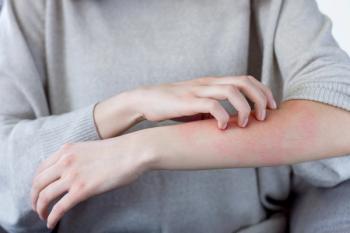
Microneedling Combined with Other Vitiligo Therapies Offers Promising Treatment for Skin Disease
Researchers of a study conducted a double-blind intervention that aimed to assess the effectiveness and tolerance of a new approach for vitiligo treatment using meso-microneedling with 5% N-acetylcysteine (NAC) ampoules and topical 4.7% NAC, compared to microneedling alone.
Microneedling was displayed as a feasible, safe and cost-effective treatment for vitiligo lesions on the face, feet or hands, minimal side effects and high tolerance, according to a recent study published in the
Vitiligo, a skin pigmentation disorder, is characterized by progressive depigmentation caused by the degradation of melanocytes, which is a skin cell that produces the darkening pigment of melanin.
According to the study, the disorder affects 0.5% to 2% of the global population without any particular sexual or racial orientation.
In a retrospective database claims
In addition, autoimmunity and oxidative stress are believed to be key factors in vitiligo depigmentation’s development and maintenance, the study suggests. Antioxidants, such as glutathione and N-acetylcysteine (NAC), have shown promise in previous cases with treating vitiligo.
Microneedling, a dermatological therapy that, according to Yale Medicine is performed using a handheld, electric device with tiny needles that make precise, microscopic punctures in the skin, is currently being explored for its potential in enhancing the absorption of topical treatments.
However, microneedling’s effectiveness in combination with other vitiligo treatments requires further investigation as few therapeutic trials have investigated the effect of glutathione and NAC on vitiligo.
Researchers of the JCD study conducted a double-blind intervention that aimed to assess the effectiveness and tolerance of a new approach for vitiligo treatment using meso-microneedling with 5% NAC ampoules and topical 4.7% NAC, compared to microneedling alone.
Between September 2020 and September 2021, folks with symmetrical vitiligo lesions found within the bottom half of their body, limbs or face were randomly selected as participants for this study.
The selection included individuals between the ages of 15 and 75, and recruitment took place at the dermatology clinic of Rasool Akram Medical Complex.
In this study, participants with symmetrical vitiligo lesions were divided into two treatment groups.
The intervention group received meso-microneedling with 5% NAC ampoules and daily application of 4.7% NAC cream, while the control group underwent microneedling with distilled water.
The severity of the lesions and extent of repigmentation were assessed using the Modified VETI Score.
Findings revealed that both groups experienced significant improvement in lesion percentage and intensity, particularly after the third session and one month following the treatment.
It’s important to note that there was no difference between the intervention and control groups, and factors such as gender, age, family history, duration of disease, disease stability and hypothyroidism were not associated with treatment outcomes.
In the study, researchers addressed some challenges faced by patients in finding effective and cost-efficient solutions for vitiligo lesions, especially in exposed areas like the face and acral or limb regions.
The data found is important information for clinicians and patients who are dealing with the ongoing struggle of managing vitiligo.
However, there were some limitations to the study including irregular patient visits for treatment sessions made it challenging to maintain a consistent treatment schedule.
In addition, researchers were unable to directly evaluate the accuracy of NAC topical ointment use by patients at home. Future studies could consider incorporating strategies like patient diaries or electronic monitoring to address this limitation, according to researchers.
Lastly, the study did not compare the efficiency of NAC with other medications, considering the evolving landscape of vitiligo treatments.
Researchers recommend that future investigations explore larger sample sizes and include comparative studies with other vitiligo therapies to further enhance our understanding of treatment options.
Newsletter
Get the latest industry news, event updates, and more from Managed healthcare Executive.




















































